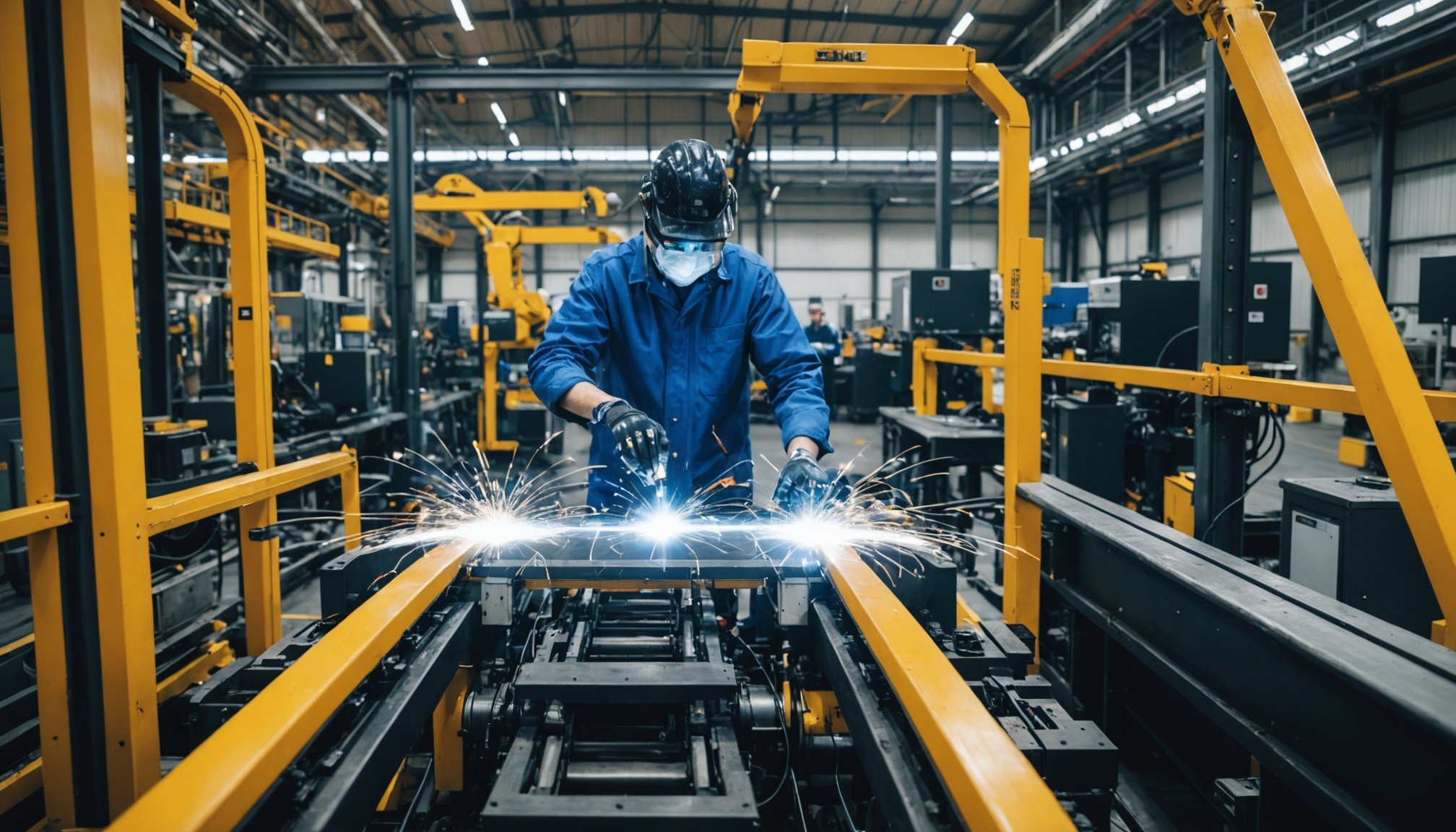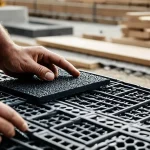Overview of AI-Predictive Maintenance in Manufacturing
In the realm of manufacturing efficiency, AI-driven maintenance is revolutionizing how businesses operate. Predictive maintenance, a significant aspect of this innovation, uses predictive analytics to forecast potential equipment failures before they occur. This proactive approach not only minimizes downtime but also enhances overall productivity.
AI technologies, such as machine learning and IoT sensors, are at the heart of predictive maintenance. These technologies analyse vast amounts of data in real-time, identifying patterns that human inspectors might miss. By leveraging historical and real-time data, AI can predict maintenance needs with remarkable precision and accuracy.
Additional reading : Transform your home: top loft conversion advantages in wandsworth
Within the UK manufacturing sector, the adoption of AI-driven maintenance is expanding rapidly. Current trends indicate a shift towards more data-driven maintenance strategies. Manufacturers are keen on reducing operational costs and improving equipment lifespans. Notably, companies are exploring AI’s potential to not only maintain existing infrastructure but also to innovate further.
AI’s role in predictive analytics is pivotal for today’s manufacturing leaders. The integration of AI in predictive maintenance signifies a major leap towards a future where maintenance is not just reactive but foresighted and strategic. As AI continues evolving, the potential for increased efficiency and effectiveness in this sector remains promising.
Additional reading : Harnessing AI to Revolutionize Predictive Analytics in UK Healthcare for Superior Outcomes
Benefits of AI-Predictive Maintenance
The benefits of predictive maintenance in manufacturing are numerous and impactful. Implementing AI in maintenance operations brings efficiency gains, significantly reducing equipment downtime. But how does this translate into tangible outcomes for manufacturers? By predicting failures before they occur, businesses can achieve enhanced reliability and operation continuity. This shift from reactive to proactive strategies means preventing disruptions before they affect production.
Among the key benefits, cost reduction stands out prominently. AI-driven solutions enable targeted maintenance, focusing resources where necessary and avoiding unnecessary repairs. As a result, manufacturers experience considerable savings, optimizing their maintenance budgets. The return on investment becomes evident through prolonged equipment lifecycles and minimized unplanned shutdowns.
Moreover, efficiency gains are palpable. AI refines the process by predicting the precise timing of maintenance needs, avoiding costly emergencies. This precision enhances manufacturing efficiency, ensuring machines operate at peak performance without intervals of downtime.
The holistic use of predictive analytics bolsters decision-making, providing invaluable insights into equipment health and performance. When effectively implemented, AI-predictive maintenance not only cuts costs but also elevates the operational standard within manufacturing, promising a more sustainable and productive future for the industry.
Case Studies of UK Manufacturers Implementing AI-Predictive Maintenance
Implementing AI-predictive maintenance has shown tangible success in various UK manufacturing case studies. Let’s delve into distinct examples where UK manufacturers have integrated AI into their maintenance operations with remarkable results.
Case Study 1: [Manufacturer Name]
This manufacturer adopted AI-driven maintenance to predict failures effectively. By analysing historical and real-time data, they improved operational efficiency by 20%, avoiding costly shutdowns.
Case Study 2: [Manufacturer Name]
Another manufacturer leveraged predictive analytics to maintain vital production equipment. This proactive approach not only reduced equipment downtime by 30% but also extended machine lifespan significantly.
Case Study 3: [Manufacturer Name]
Through AI technologies like machine learning, this company optimized maintenance schedules, realizing substantial cost reduction. Their focus on data-driven strategies led to enhanced reliability and operation continuity.
In each case, manufacturers experienced improved efficiency, reliability, and cost savings. These examples underscore the potential of AI integration in the manufacturing sector, highlighting key improvements and lessons learned. By following these successful paths, other manufacturers can explore how AI-enhanced maintenance can transform their operations, driving long-term productivity gains.
Challenges in Implementing AI-Predictive Maintenance
Implementing AI-predictive maintenance is not without its obstacles. Manufacturers face a range of challenges that can hinder successful integration. A primary barrier is the quality of data being used. AI technologies require extensive historical and real-time data to function optimally. However, many manufacturing businesses struggle with inconsistent or incomplete data sets, which can compromise predictive capabilities.
Another significant challenge is data integration. The success of AI-driven maintenance hinges on the seamless integration of various data sources, including sensors and legacy systems. Often, existing equipment is not inherently compatible with new AI technologies, posing an additional layer of complexity.
Manufacturers must also address workforce adaptation to technological shifts. Ensuring employees are adequately trained to work alongside AI tools is essential to maximise their potential. Change management processes should encourage acceptance and provide support during the transition.
Despite these hurdles, manufacturers can employ strategies to overcome them. Investing in comprehensive data management systems is crucial. Building partnerships with AI technology providers can also ease integration processes, offering access to expertise and innovative solutions tailored to manufacturing needs. By proactively tackling these challenges, companies can enhance their predictive maintenance capabilities and realise significant efficiency gains.
Strategies for Effective Implementation
Successfully implementing AI-driven maintenance hinges on adopting well-structured strategies. It begins with setting clear goals aligned with operational priorities. The first step is a thorough evaluation of existing practices and identifying areas where predictive analytics could bring about substantial improvement in manufacturing efficiency.
Next, building a skilled team is crucial. Providing robust training ensures that staff adeptly navigate AI tools and processes. Integrating AI-driven maintenance effectively involves preparing the workforce for these technological shifts. It is beneficial to include change management practices to foster a supportive environment and enhance acceptance.
Collaboration is key. Partnering with experienced AI technology providers can streamline implementation processes. These partnerships offer expertise and innovative solutions tailored to manufacturing needs, making the transition smoother and more efficient.
Moreover, establishing effective data management systems is vital. Ensuring high-quality data supports the accuracy of predictions, which is essential for making informed decisions. Reliable data integration optimises the potential benefits of predictive analytics, enhancing the overall efficiency of the maintenance operations.
By addressing these elements strategically, manufacturers can leverage AI technologies more effectively, driving significant efficiency gains and ensuring the long-term success of AI-predictive maintenance initiatives.
Future Trends in AI-Predictive Maintenance
The future of predictive maintenance is poised for transformative advancements, driving further innovation in manufacturing. Emerging technologies such as edge computing and advanced IoT devices are creating new pathways for data collection and processing. These innovations empower real-time decision-making, elevating operational efficiency to unprecedented heights. As AI systems become more sophisticated, their ability to predict failures with greater accuracy will redefine manufacturing innovation.
Sustainability is taking a central role in predictive maintenance strategies. AI-driven maintenance not only reduces waste but also maximizes energy efficiency. This aligns with global efforts to minimize environmental impact while promoting sustainable industry practices. As manufacturers adopt green technologies, AI systems will be pivotal in tracking and enhancing sustainability metrics.
Additionally, the integration of machine learning with predictive analytics is forecasted to improve insights into predictive maintenance further. The combination of these technologies allows for more precise forecasting and resource allocation. This synergy enhances manufacturing processes, ensuring technology advancements remain at the forefront of company strategy.
By keeping abreast of these trends, manufacturers can capitalize on the benefits of AI-predictive maintenance, ensuring they remain competitive and responsive to the fast-paced technological landscape.



